12 Plants That Keep Bugs Away Naturally
Natural pest control has gained tremendous popularity as homeowners seek eco-friendly alternatives to chemical sprays and treatments that can harm beneficial insects while creating potential health concerns. Many plants have evolved powerful natural compounds that repel unwanted insects while attracting beneficial pollinators, creating balanced garden ecosystems that work with nature rather than against it.
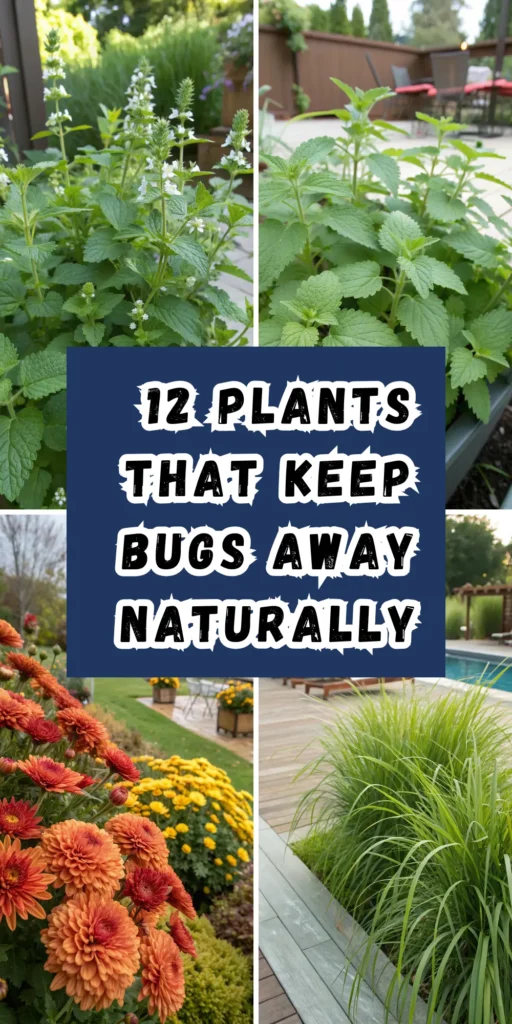
The secret to effective natural bug control lies in understanding which plants produce the strongest insect-repelling properties while positioning them strategically around outdoor living spaces, garden beds, and entry points. When planted thoughtfully, these natural pest deterrents can significantly reduce bothersome insects while adding beauty, fragrance, and culinary value to your landscape.
1. Lavender (Lavandula species)
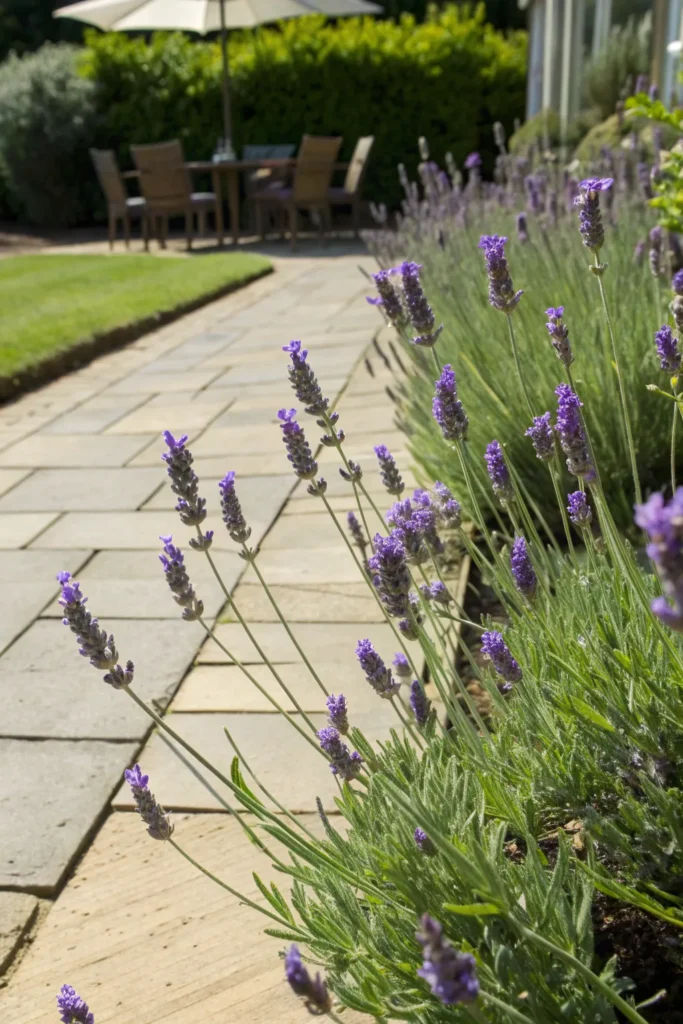
Why this works: The essential oils in lavender flowers and foliage naturally repel mosquitoes, flies, moths, and fleas while creating beautiful purple blooms and heavenly fragrance.
Implementation: Lavender plants are positioned near patios, walkways, and outdoor seating areas where their fragrance provides maximum bug-repelling benefits. Plants prefer well-drained soil and full sun for strongest oil production and most effective pest control.
Who benefits: Those wanting dual-purpose plants that provide natural pest control and beautiful garden displays, plus anyone seeking fragrant herbs for culinary and craft uses.
Pro tip: Flowers are harvested at peak bloom and dried for long-lasting sachets that continue repelling moths and other insects indoors throughout the year.
2. Citronella Grass (Cymbopogon nardus)

Transform outdoor spaces into mosquito-free zones with this natural source of citronella oil that’s commonly used in commercial insect repellents.
Implementation: Large clumps of citronella grass are planted around decks, patios, and pool areas where their lemony scent creates natural mosquito barriers. Plants thrive in warm climates and can be grown in containers in cooler regions.
Best for: Those living in mosquito-prone areas and homeowners wanting the most effective natural mosquito deterrent available in plant form.
Con: Plants are cold-sensitive and require protection or indoor wintering in cooler climates, but provide unmatched mosquito control during the growing season.
3. Marigolds (Tagetes species)

Why try this? Bright, cheerful flowers contain compounds that repel aphids, whiteflies, mosquitoes, and even nematodes that damage plant roots underground.
Steps: Marigolds are planted throughout vegetable gardens, around patios, and near problem areas where bugs congregate. French and African varieties offer different heights and flower sizes for various landscape uses.
Why it works: The pungent scent that some find offensive is exactly what makes marigolds so effective at deterring a wide range of garden pests and flying insects.
Styling tip: Different marigold varieties are mixed for continuous blooms from spring until frost while providing season-long natural pest control benefits.
4. Basil (Ocimum basilicum)

Create natural fly and mosquito barriers while growing fresh herbs for cooking with this dual-purpose plant that thrives in warm weather.
How to: Basil plants are positioned near outdoor dining areas, kitchen windows, and garden beds where their strong scent repels flies and mosquitoes. Regular harvesting encourages continued growth and maintains pest-repelling potency.
Why it matters: Provides effective natural pest control while supplying fresh herbs for cooking, making it one of the most practical bug-repelling plants available.
Pro tip: Different basil varieties like lemon basil, cinnamon basil, and holy basil offer varying scents and flavors while all providing excellent insect-repelling properties.
5. Catnip (Nepeta cataria)
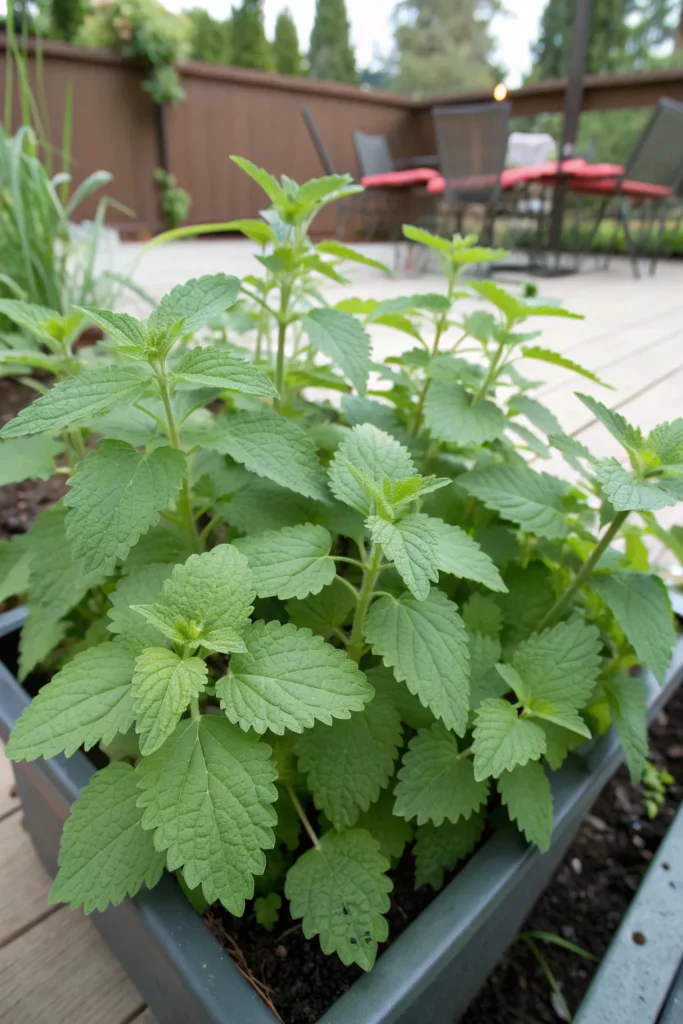
Add powerful mosquito protection with this mint family member that studies show is more effective than DEET at repelling mosquitoes naturally.
Implementation: Catnip plants are grown in containers or designated garden areas where they can spread without overwhelming other plants. The strong scent provides excellent mosquito control around outdoor living spaces.
Who it’s for: Those wanting the most scientifically proven natural mosquito repellent and cat owners who enjoy providing natural entertainment for their pets.
Con: Plants can spread aggressively and attract neighborhood cats, but provide unmatched natural mosquito control when properly managed.
6. Peppermint (Mentha piperita)
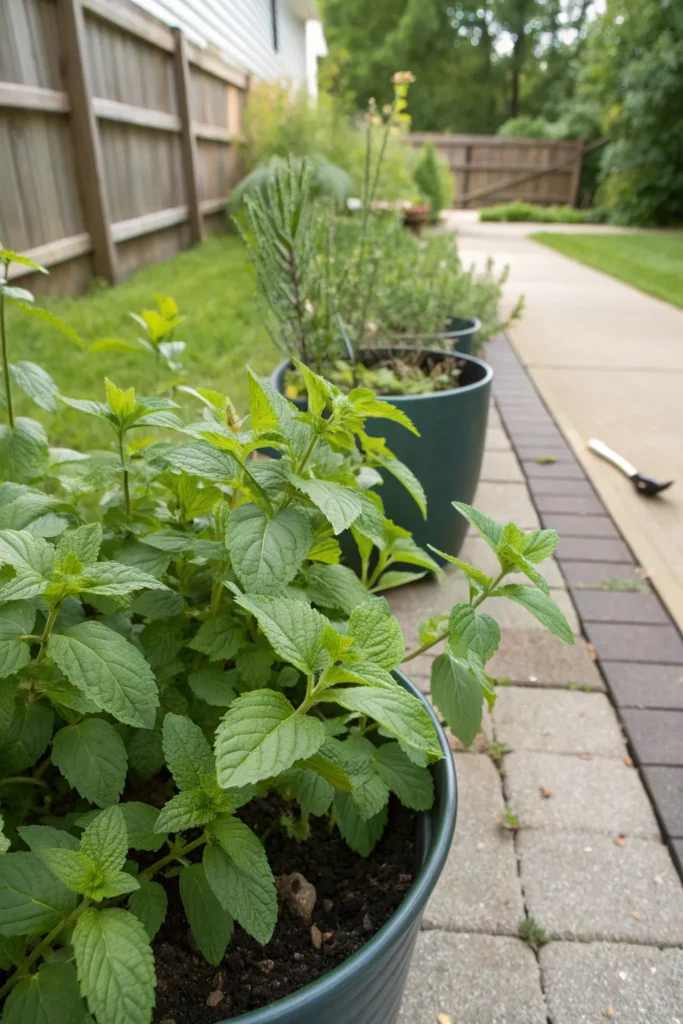
Why try this? The intense menthol scent naturally repels ants, mice, spiders, and mosquitoes while providing fresh herbs for cooking and natural remedies.
How-to: Peppermint is grown in containers to control spreading, then positioned around patios, near ant trails, and close to areas where mice might enter buildings. Fresh leaves can be crushed to release oils for immediate pest control.
Best for: Those dealing with multiple pest issues and anyone wanting versatile herbs that provide pest control plus culinary and medicinal benefits.
Con: Mint spreads aggressively when planted directly in ground, but container growing provides excellent control while maintaining pest-repelling benefits.
7. Rosemary (Rosmarinus officinalis)
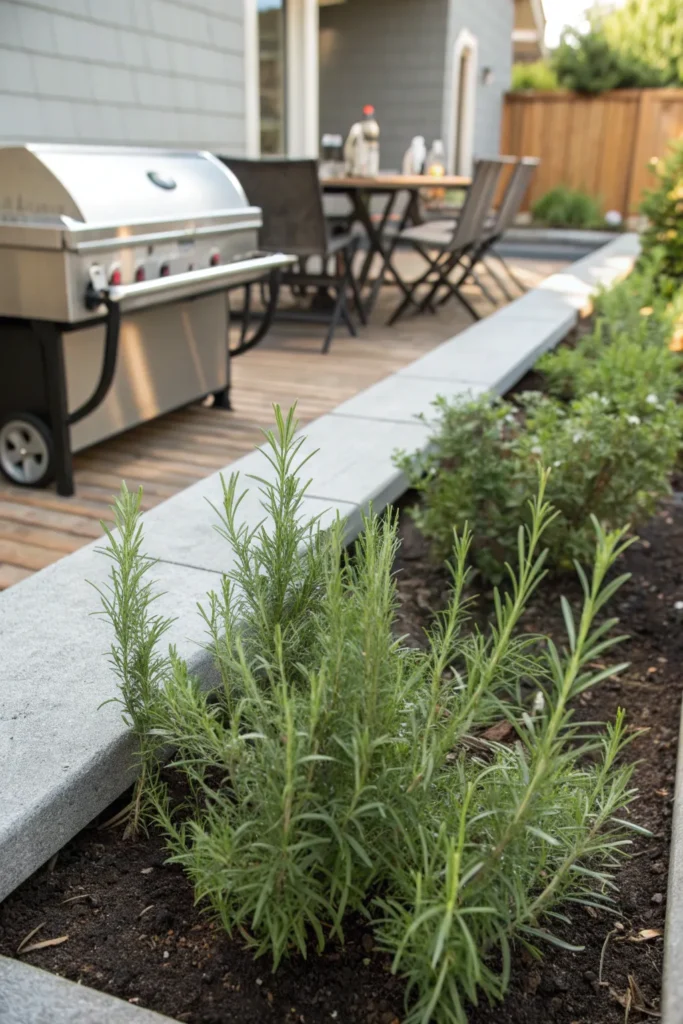
Transform outdoor cooking areas into bug-free zones with this aromatic herb that repels mosquitoes, flies, and cabbage moths while providing culinary herbs.
Steps: Rosemary plants are positioned near grills, outdoor kitchens, and dining areas where their woody fragrance creates natural pest barriers. Plants prefer well-drained soil and full sun for strongest growth and oil production.
Why it’s helpful: Combines effective natural pest control with fresh herbs for cooking, while the evergreen foliage provides year-round garden structure and fragrance.
Pro tip: Fresh rosemary sprigs are thrown onto grill coals or fire pits to create immediate bug-repelling smoke while adding pleasant aroma to outdoor gatherings.
8. Lemon Thyme (Thymus citriodorus)

Create ground-level pest barriers with this low-growing herb that releases bug-repelling oils when walked on while providing fragrant garden pathways.
Benefits: The citrusy scent naturally repels mosquitoes and other flying insects while the low-growing habit makes it perfect for pathway edges and ground cover applications. Plants release fragrance when brushed against or stepped on.
Steps: Lemon thyme is planted along walkways, around patios, and in areas where foot traffic will release the natural oils that provide pest control benefits.
Best for: Those wanting natural pest control integrated into landscape design and gardeners seeking fragrant, edible ground covers.
Styling tip: Plants are allowed to spill over pathway edges and between stepping stones where foot traffic maximizes fragrance release and pest control effectiveness.
9. Lemon Balm (Melissa officinalis)
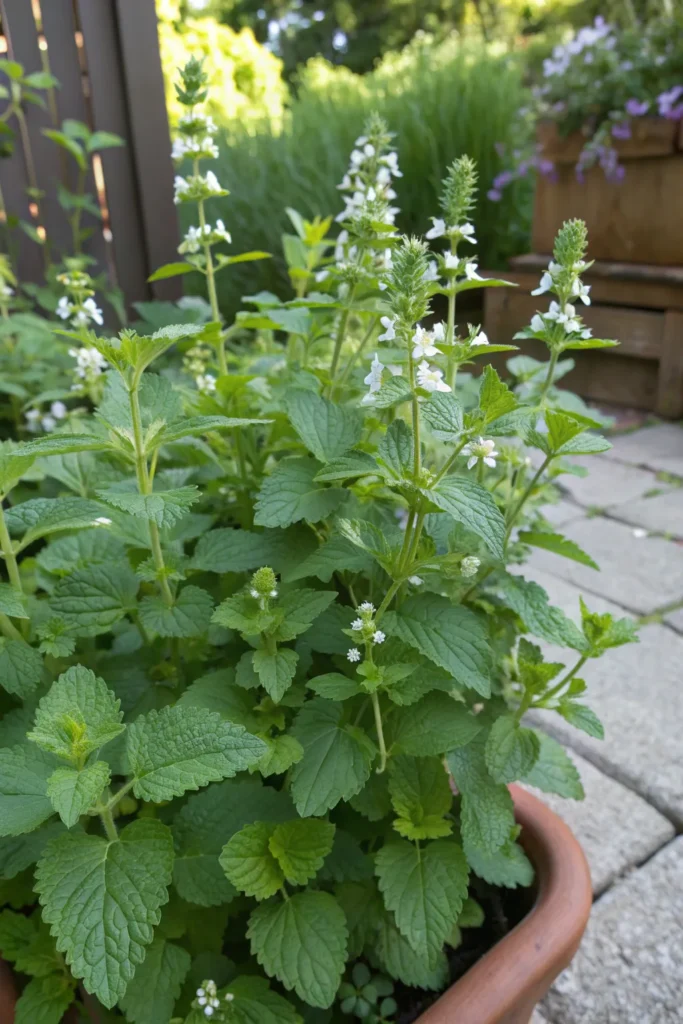
Add natural mosquito and gnat protection with this easy-growing mint family member that thrives in partial shade while providing lemony fragrance.
Implementation: Lemon balm plants are grown in containers or designated areas where they can spread naturally. Leaves can be crushed and rubbed on skin for natural bug repellent or dried for teas and natural remedies.
Who benefits: Those wanting low-maintenance pest control plants and anyone seeking natural alternatives to chemical insect repellents for skin application.
Downside: Plants spread vigorously and self-seed readily, but provide excellent natural pest control and have numerous culinary and medicinal applications.
10. Nasturtiums (Tropaeolum majus)
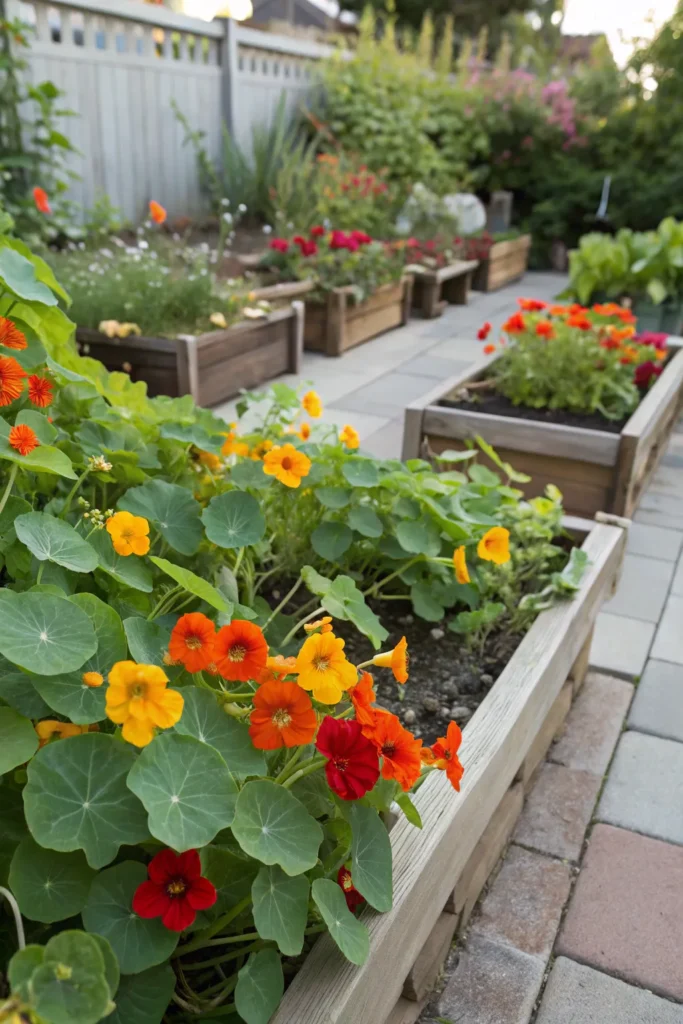
Transform garden beds into natural pest control systems with colorful flowers that repel aphids, cucumber beetles, and squash bugs while attracting beneficial insects.
How to: Nasturtiums are planted as companion plants around vegetables and as border plants around patios where their peppery scent deters various garden pests. Flowers and leaves are edible and add color to salads.
Why it works: Acts as trap crops that attract pests away from valuable plants while repelling others, creating balanced garden ecosystems that support beneficial insects.
Downside: Plants prefer cooler weather and may struggle in extreme heat, but provide excellent pest control and edible flowers during their growing season.
11. Alliums (Allium species)
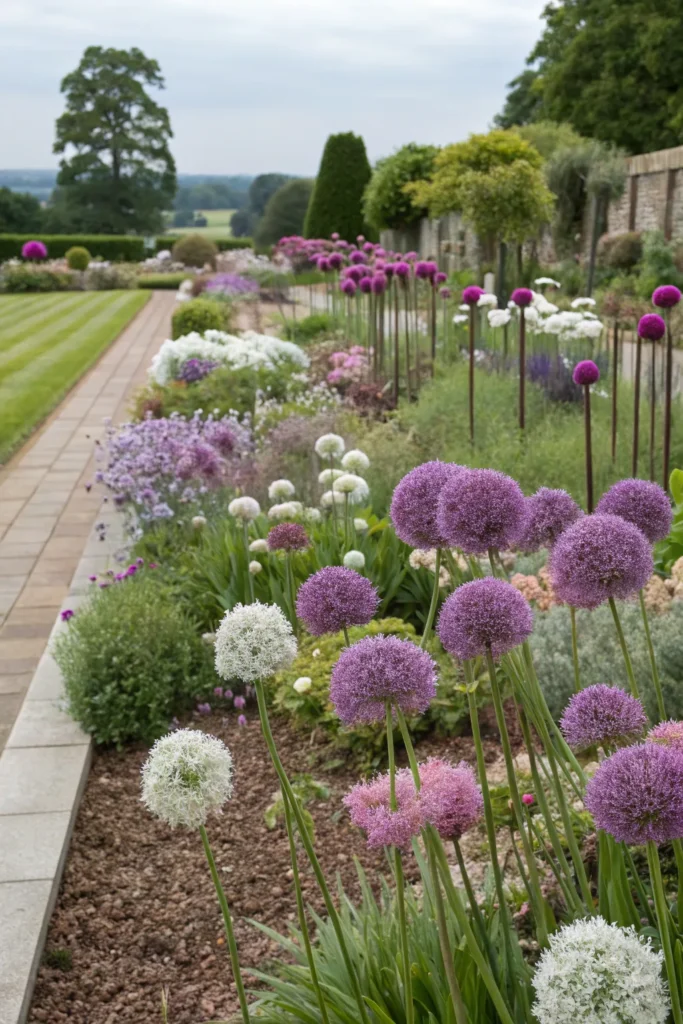
Create beautiful garden displays that naturally repel aphids, cabbage worms, and carrot flies with ornamental onion family plants that deer also avoid.
Steps: Various allium species are planted throughout garden beds and around problem areas where their onion-like scent provides natural pest deterrence. Globe-shaped flowers add architectural interest while providing pest control.
Best for: Those wanting ornamental plants that serve practical pest control functions and gardeners dealing with deer damage in addition to insect problems.
Con: Plants have specific soil and climate requirements, but provide long-lasting pest control benefits along with stunning seasonal flower displays.
12. Chrysanthemums (Chrysanthemum species)
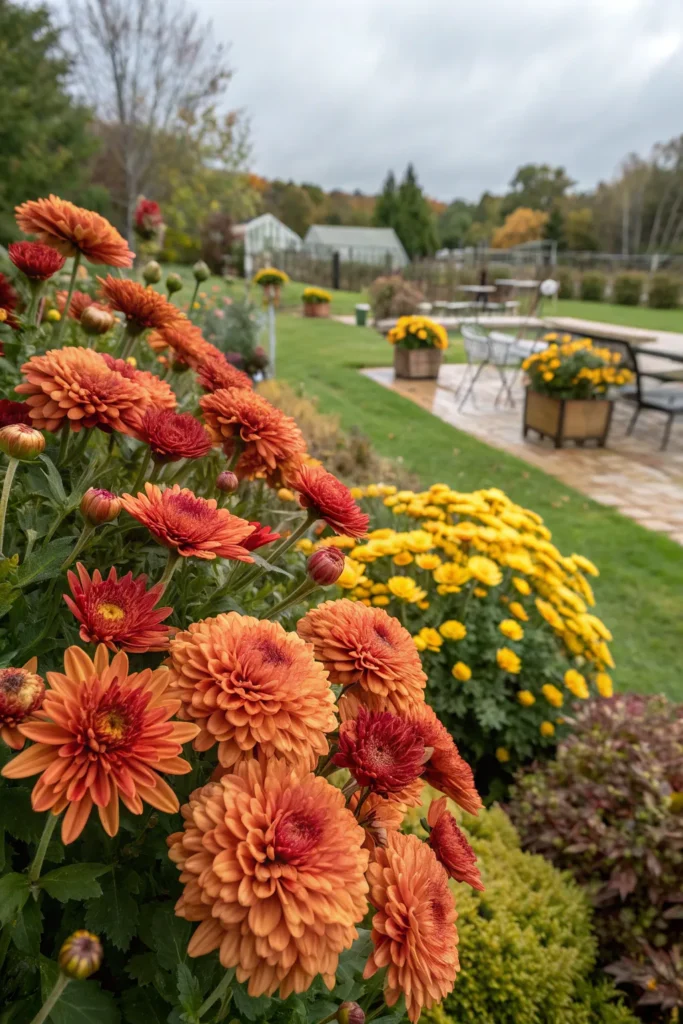
Add fall color while creating powerful natural insecticides with flowers that contain pyrethrin compounds used in commercial organic pest control products.
How-to: Chrysanthemums are planted around garden beds and outdoor living areas where their natural insecticides provide broad-spectrum pest control. Flowers can be dried and ground into natural pest control powders.
Why it’s great: Provides some of the most effective natural pest control available while adding beautiful fall blooms and extending garden season interest.
Drawback: Plants are primarily fall bloomers and may require specific care for optimal flower production, but offer unmatched natural insecticide properties.
Create Your Natural Bug-Free Paradise
The most effective natural pest control gardens combine multiple bug-repelling plants positioned strategically around outdoor living spaces and problem areas. Start with the most versatile options like lavender, basil, and marigolds that provide immediate benefits, then add specialized plants for specific pest issues. Remember that crushing leaves releases essential oils for immediate bug control, while established plants provide ongoing protection throughout the growing season.






